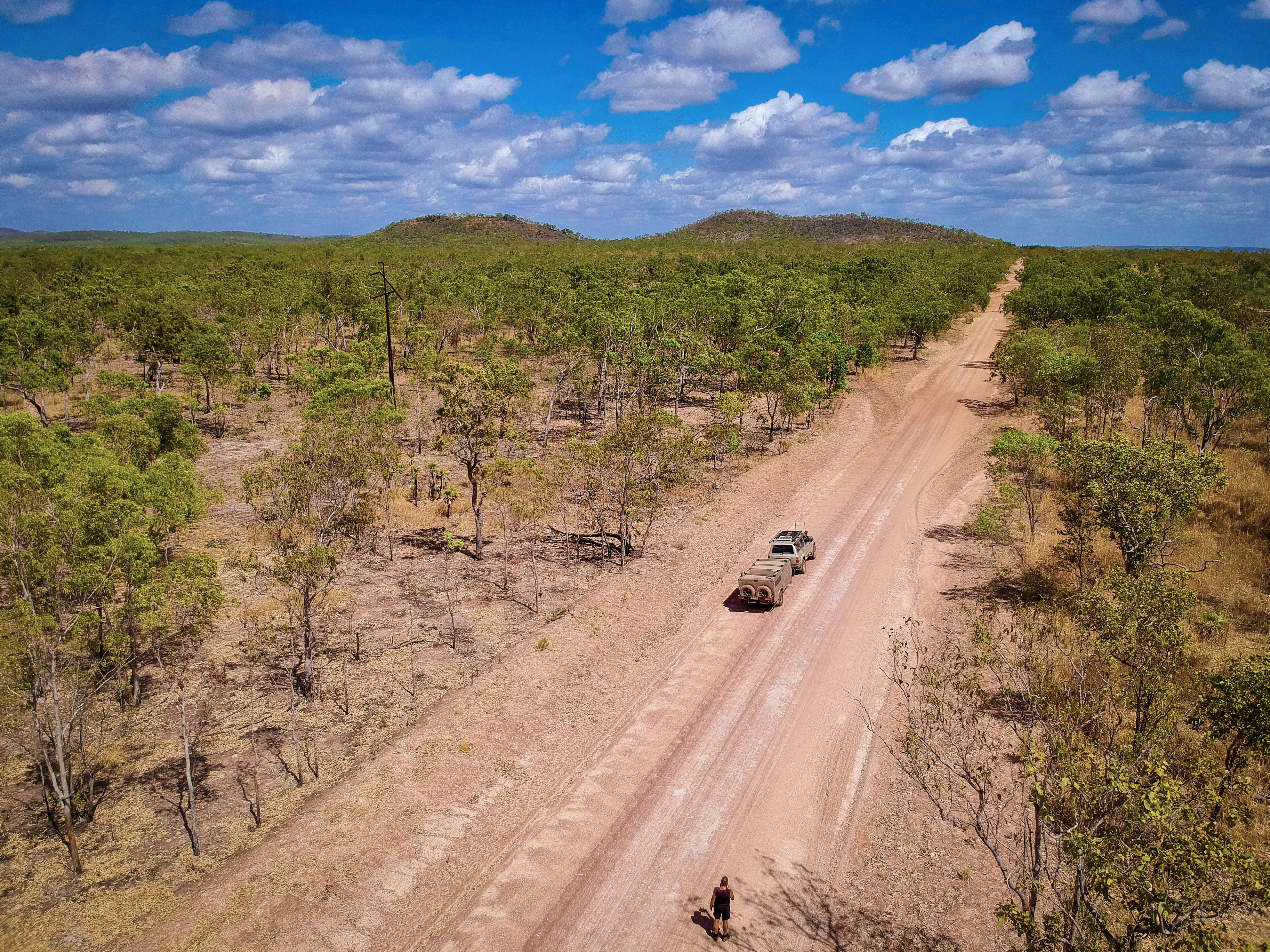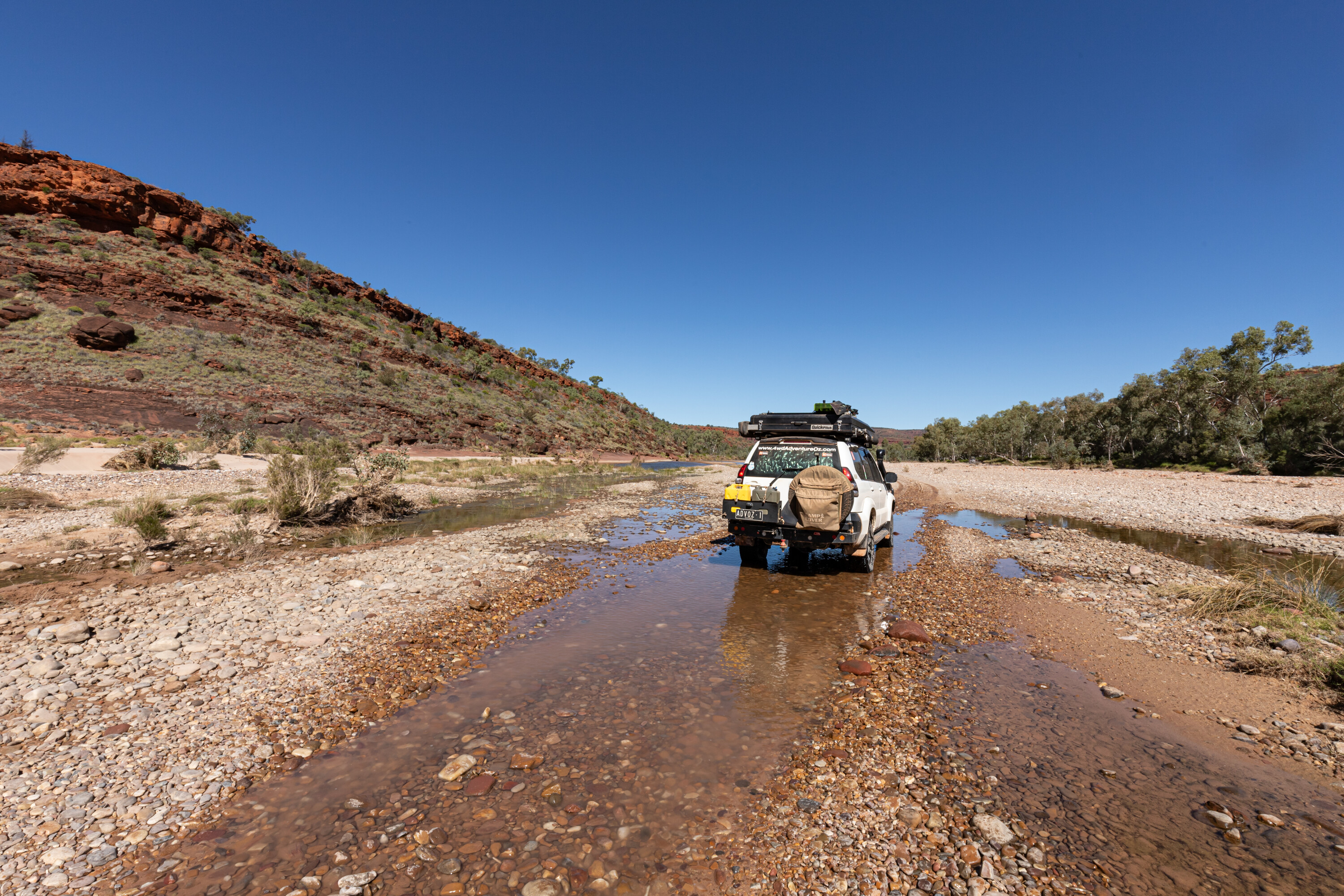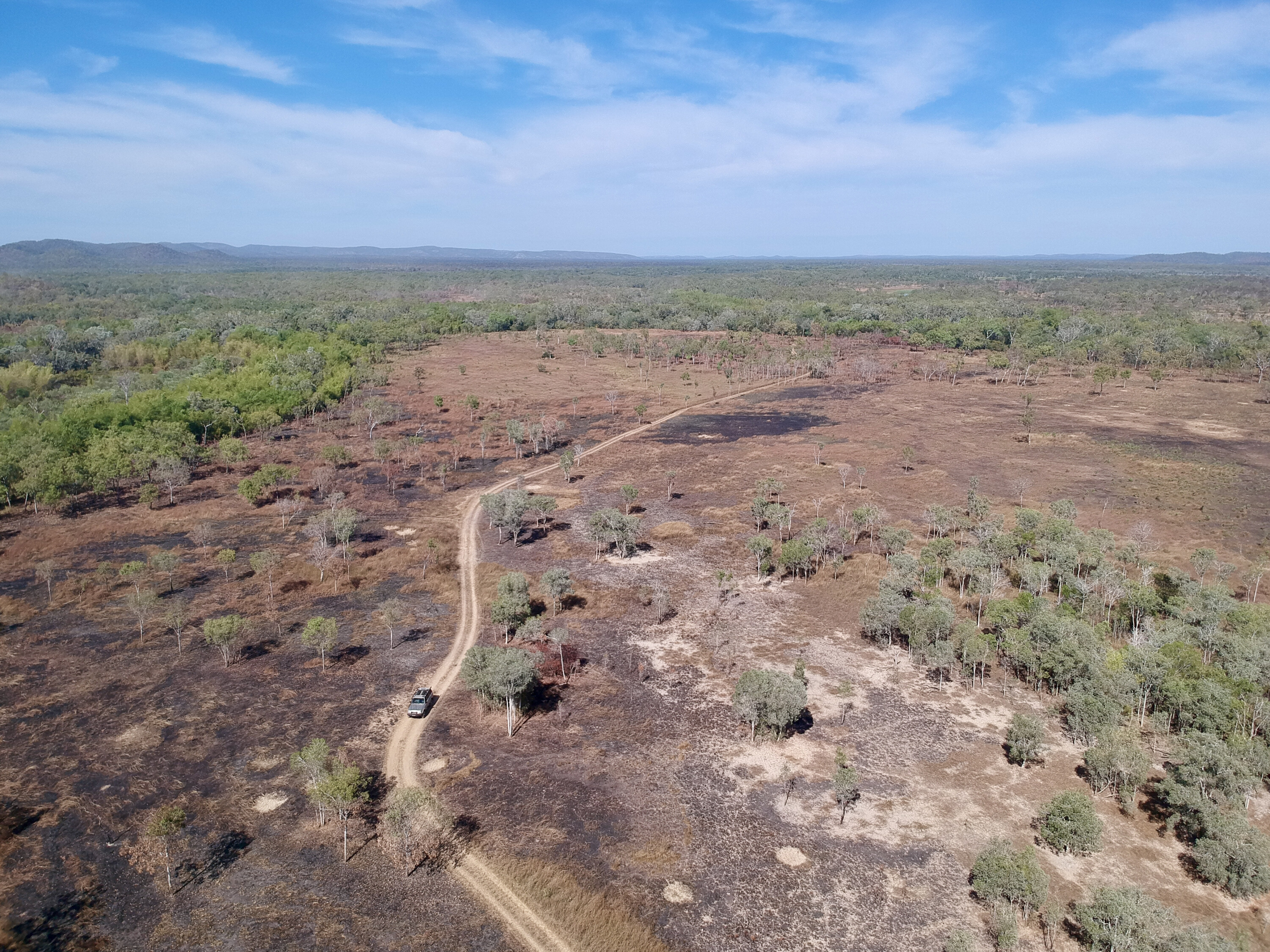Settled back in the late 1800s when gold was found in the area, the Top End’s Pine Creek is now a town full of history with a treasure trove of heritage, mining sites and railway buildings.Pine Creek, a good two hours south of Darwin, is now just a little stopover off the main highway, but there are heaps to see and do, including driving the Northern Goldfields Loop that heads back north towards Adelaide River.Today’s Pine Creek is just a small community where travellers stop overnight but back in the day, this place was booming. Gold was found by construction workers in 1870 when a drilling crew for the Overland Telegraph Line found alluvial gold near Yam Creek.
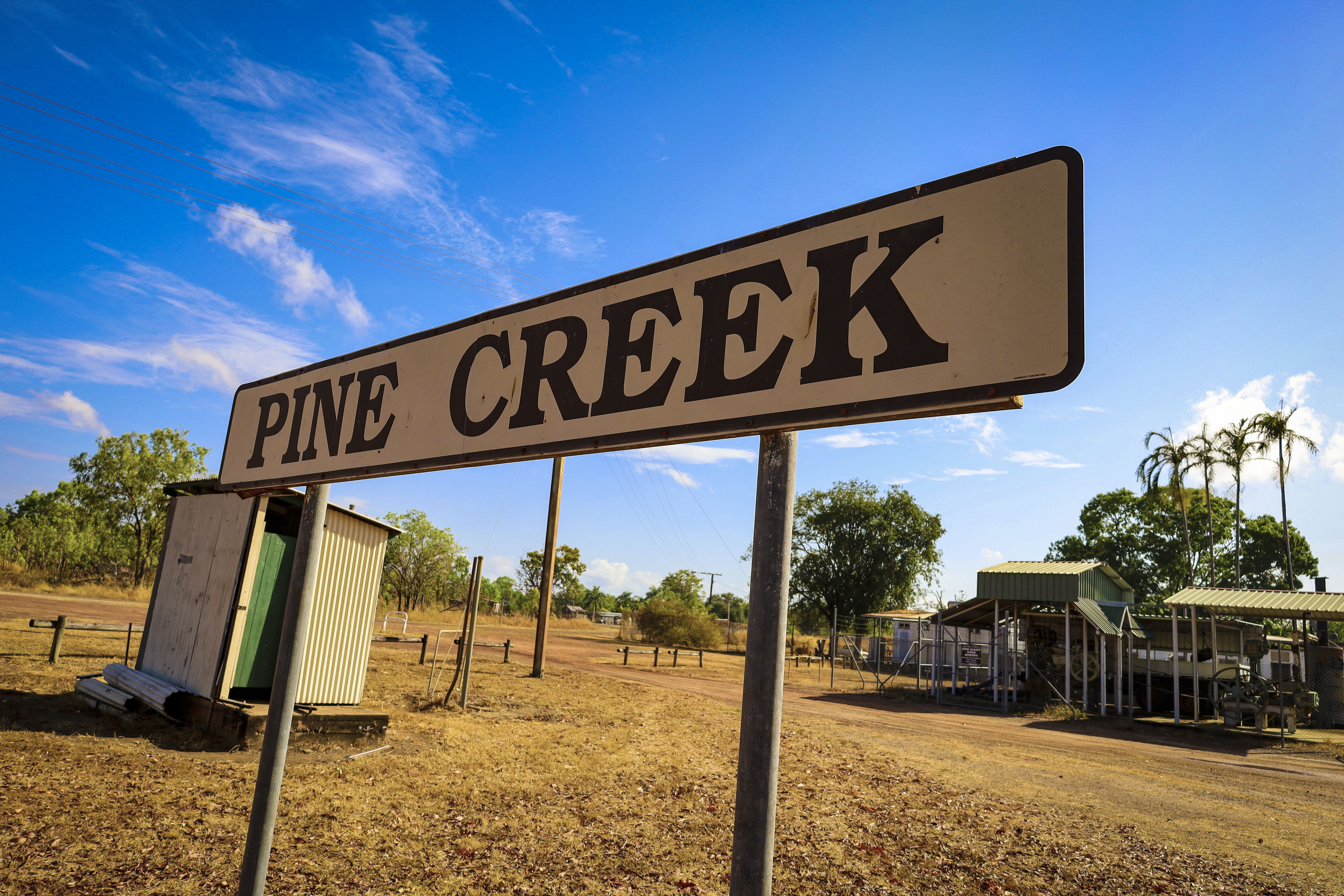
Over the next few years it was one of the most frantic gold rushes that the north had ever seen, where in just three years, major goldfields were declared. As the town grew, it became a repeater station for the Telegraph Line and by 1889 a railway line was built from Darwin to Pine Creek. This was to be the start of the transcontinental railway line down through the Red Centre to Adelaide.The first train arrived at the Creek in 1889 after 310 bridges and flood openings were built from Darwin. From the turn of the century, the town and indeed the railway were significant to the mining industry where apart from gold, other minerals like iron ore, silver, lead, zinc and uranium were found and transported back to Darwin. During WWII, Pine Creek was used as a staging camp and many mines reopened to support the war effort.Since gold was found back in 1870, there were a reported 2000 Chinese miners working the mines and other areas through the 15 registered mines that were dug. One of the biggest mines was the Enterprise. It started off as a simple shaft but soon grew to a massive open pit where more than 23,000kg of gold was extracted over 10 years. The mine can be viewed near the centre of town, at the end of Moule Street, but is now full of water with the deepest point 135m below the surface. Also at the viewing area are several Chinese mines that you can look down at through the safety fences.
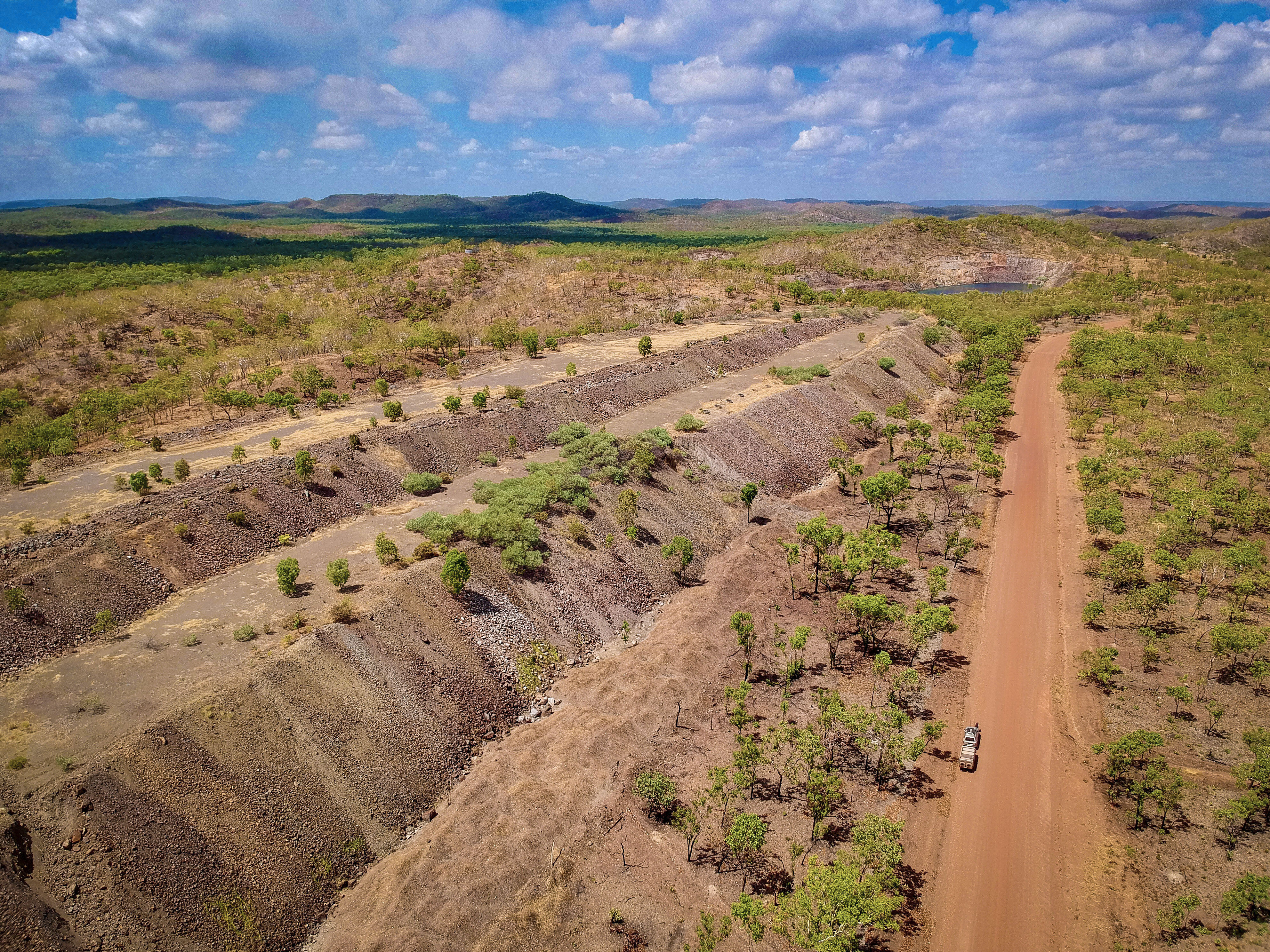
As the Pine Creek goldfields grew, the town’s infrastructure did too, with a police camp, hotels, bakery and a school. As recently as 1995, the major goldfields in the area ceased operations as they were unviable, and today local prospectors now scratch around for a little colour. Over time, big amounts of ore, tin and uranium have been pulled out from around the area.Pine Creek is pretty unique, as locals have gathered a lot of the old mining gear and put it on display in the Miners Park at the northern end of town. To be honest, this is one of the best displays I have seen with everything from a huge 120-head stamper, rail carts, steam winders, mine heads, steam engines, shakers, pulleys, wheels and so much more. Every displayed piece has an info board attached with so much information on the particular exhibit, its use and the time frame when it was used; there’s so much here it’s hard to take it all in.
Railway South
When the idea of a rail line was to be built in 1883, the government of South Australia – which at the time incorporated what we now know as the NT – in 1886 awarded the contract to a Melbourne company who used ‘coolie’ labour. This entailed using Indian and Singhalese doing the earthwork, followed by the Chinese laying the rail plates and line, accomplishing up to 1200m a day.
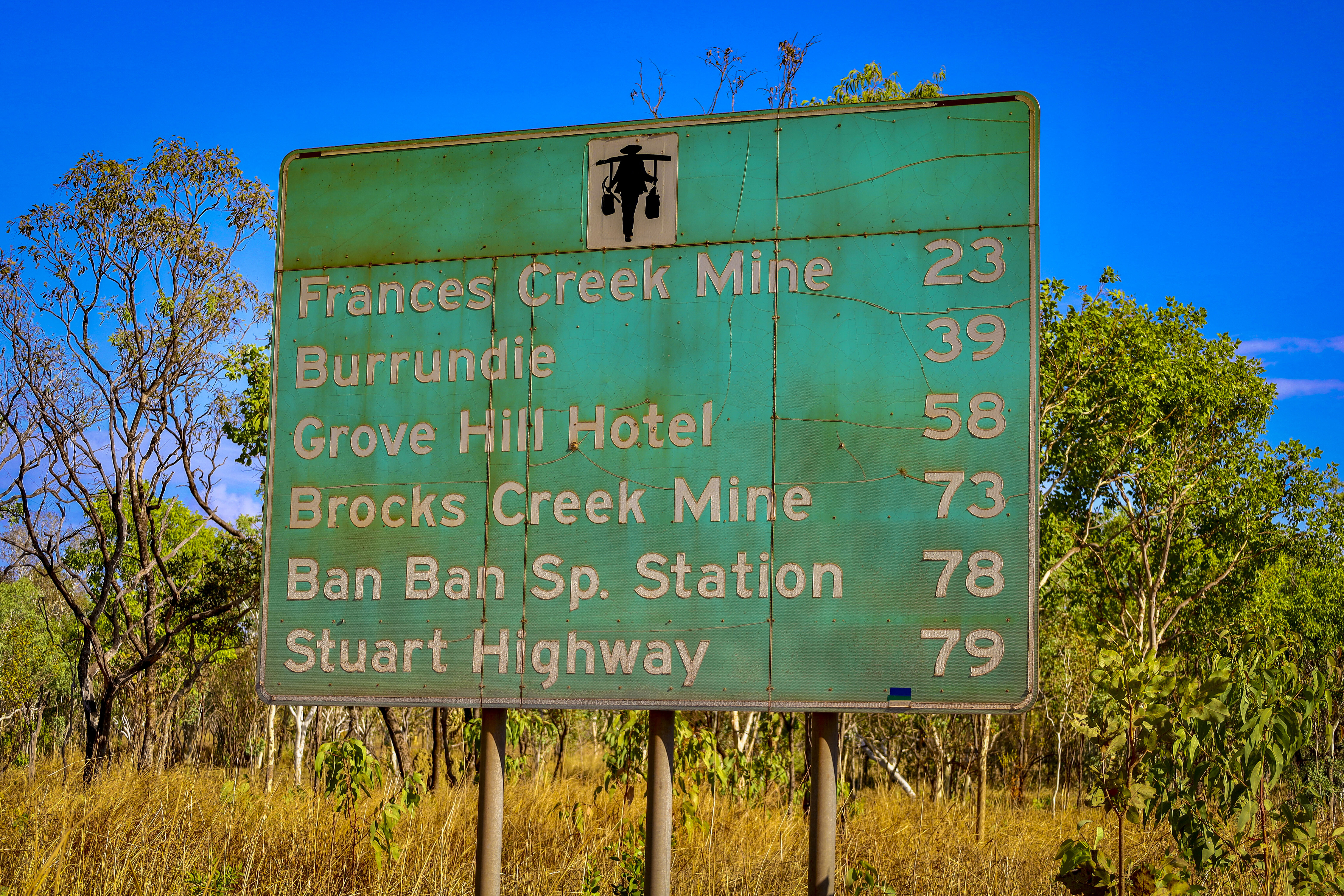
Unfortunately for Pine Creek, years after it opened, only two trains a week came from Darwin, and then in 1917 the line extended south to Katherine, making Pine Creek an unimportant stop. But during WWII an airstrip was built and a dispersal base for the troops, which saw an incredible 147 rail services a week running through Pine Creek to Darwin.Today, the rail museum in town is pretty impressive, with buildings chock-full of memorabilia, and train engines and carriages. Incidentally, the Pine Creek Museum is the oldest prefab corrugated iron building in Australia, and listed by the National Trust.Back in its heyday, it was the home for the mining warden across in the goldfields at Burrundie, and was moved to its present location in 1913. It’s had a chequered history as a clinic, military hospital, post office and a phone exchange.
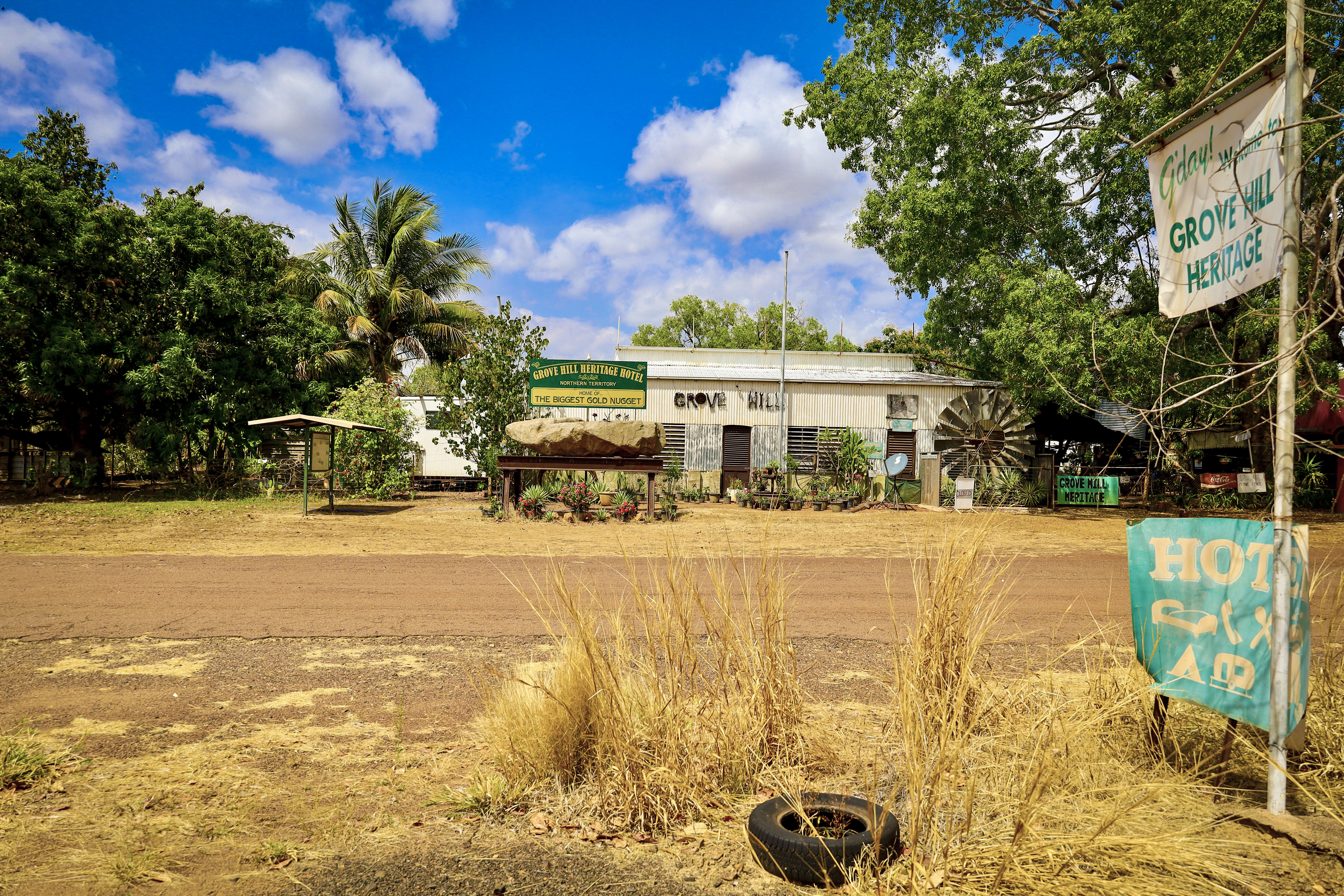
Wandering around the streets of Pine Creek you can see the old buildings including the Ah Toy Bakery which was used as a butcher shop, then a bakery that was used until 1945 when bread was trucked in from Darwin. Other tin buildings around town include the old station master’s house, Maysie’s House that’s complete with 1950 decor and miners’ cottages which, incredibly, are lined with corrugated iron – summertime temps inside must have been insane.
Northern Goldfield Loop Heritage Trail
After spending time around town, you can do a loop trail that heads north towards Adelaide River passing the abandoned town (now ruins) of Burrundie and its goldfields. The loop (all of 79km) starts off on the bypass road around Pine Creek and is well-signposted with both distances and a symbol of a person carrying buckets across his shoulders.
The Chinese played a huge role not only here but across the country with their hard work in the mines and also market gardens. There’s nothing hard about the drive but it is all dirt through spectacular ranges following the Pine Creek Geosynclines where huge mineral-rich seams were exposed after millions of years of weathering.
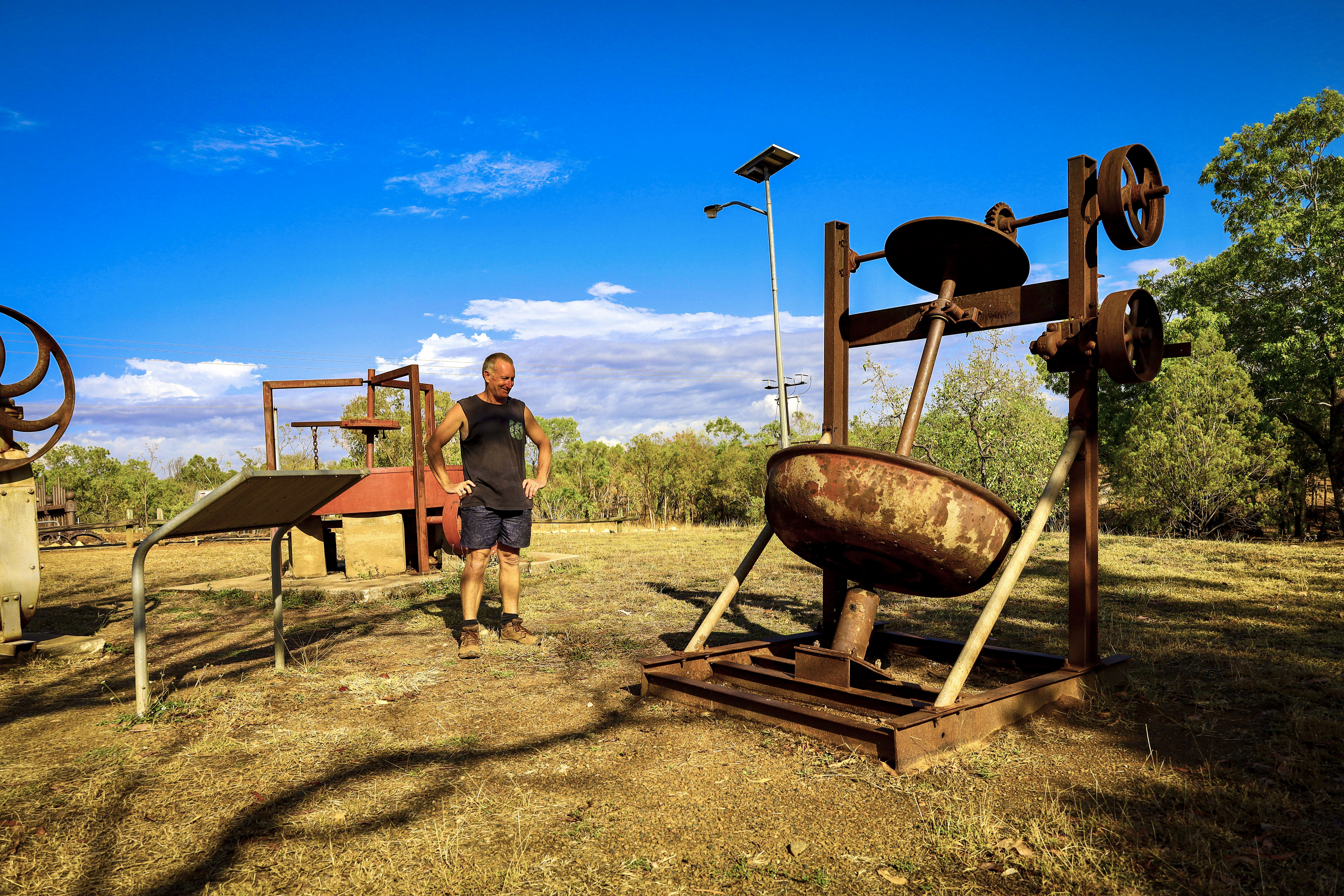
Heading out from Pine Creek there’s a warning on the road regarding the mine trucks that use it, as there are still huge open-cut and active mines in the area. It wasn’t long before a roadside sign caught my eye along the way, this was for Esmeralda Station.The sign describes the life of Tom Cole back at the turn of the century and his association with the area. He was 17 when he arrived in Australia from England, and after a multitude of jobs across the Top End, he stumbled across Esmeralda Station and bought it in 1940. But he soon realised that it was tough country and sold off his bullocks to the Vestey clan who gave him near nothing to what they were worth. Just two years later, he sold in despair and moved on.

Since then, this huge station has still run beef but also as a plant nursery following WWII. Nearby, Ban Ban Station is another huge pastoral lease covering nearly 1900km² running huge amounts of beef cattle. Both these stations were established in the 1880s when gold was found. Also listed on the direction signs are several mines, including Francis and Brock Creek mines. These are still active and off limits to the general public.
Burrundie
It’s about halfway on the heritage trail that the road crosses a rail line and it’s here that the township of Burrundie once stood. Now in ruins, Burrundie and the surrounding goldfields were a bustling town back in the late 1880s.There were nearly a dozen huge goldfields scattered around Burrundie, making it the perfect place for hotels, court house, warden’s office and police quarters. In fact, Burrundie only lasted for a few years while the boom was on and at one stage housed 3000 Chinese railway workers. Slowly they moved on and the gold dried up by 1900, then by 1912 most of the buildings had either just collapsed or been moved to nearby Pine Creek to be recycled.

Burrundie was the second largest town outside of Darwin and was planned to be the hub of the adjoining goldfields in 1884. The name comes from the Aboriginal meaning of nearby Mount Wells. Wandering around the area there’s really not much left apart from a few stone chimneys, rough concrete slabs and a few old car wrecks. The info board is an interesting read describing the area from the goldfields, Chinatown, cattle stations and bogus company shenanigans – all this happening from 1885 until 1900.Another 20km along, is the Grove Hill Heritage Hotel. It’s closed now but when established in 1934, it was a popular drinking spot for the local miners and tourists alike; they also built a museum dedicated to the area’s history. Now while you can’t go inside, there’s plenty to see and read about around the hotel.The Heritage loop trail passes by open-cut mines that have been rehabilitated and where you can see massive tailing mounds and open-cut holes now filled with mineral-rich water. It’s an interesting, yet easy drive providing insights in to this harsh area, but it’s hard to comprehend just how hard it would have been 150 years ago when people were just trying to survive through either gold mining or working on the railway. Pine Creek is definitely a must-do for any history buff exploring in the NT.
Five things to see and do
PINE CREEK MUSEUM
Pine Creek is the only original mining town from the 1870s’ gold rush era remaining in the Top End. The Museum, administered by the National Trust, is the oldest surviving prefab corrugated iron building in Australia.
PINE CREEK RAILWAY STATION MUSEUM
This museum is located in the original railway station building built in 1888 and which served as a communications centre until 1976. Exhibited are historic photos, maps and memorabilia.
NORTHERN GOLDFIELD LOOP HERITAGE TRAIL
This 79km route takes you from Pine Creek to Adelaide River, passing through Grove Hill and its Heritage Hotel and museum, Burrundie town ruins, and long abandoned and modern open cut mines.
KAKADU HIGHWAY
Pine Creek is the southern entry point to Kakadu National Park, so if Darwin is not on the radar you can bypass its city lights and take the scenic 209km Kakadu Highway (State Route 21) straight to the park instead.
WORLD WAR II HISTORY
McDonald airfield, 16km northwest of Pine Creek on the old highway, is one of several military airstrips set up alongside the Stuart Highway in WWII. B-25 Mitchell bombers launched raids from here on Japanese targets in the Dutch East Indies (Indonesia).

